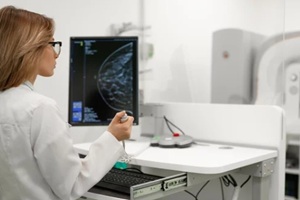 Menopause is often associated with physical symptoms, such as hot flashes and night sweats, but for many women, the emotional toll can be just as overwhelming. Mood swings, sudden irritability, or feelings of sadness can surface without warning, leaving you wondering what’s happening to your sense of self.
Menopause is often associated with physical symptoms, such as hot flashes and night sweats, but for many women, the emotional toll can be just as overwhelming. Mood swings, sudden irritability, or feelings of sadness can surface without warning, leaving you wondering what’s happening to your sense of self.
These changes are a natural part of the hormonal shifts that occur during this life stage and nothing to be ashamed of. If you’re struggling with the emotional side of menopause, working with a menopause specialist can help you regain stability and a greater sense of control.
Why Mood Swings Happen
Mood swings during menopause are driven mainly by hormonal fluctuations, particularly in estrogen and progesterone. These hormones don’t just relate to your menstrual cycle but also influence brain chemicals, such as serotonin, which affects mood and emotional well-being.
As levels rise and fall unpredictably during perimenopause and menopause, you may experience sudden shifts in how you feel, ranging from irritability and sadness to anxiety and frustration. These emotional ups and downs can feel confusing or even distressing, especially when they appear without an apparent cause.
It’s also important to know that these changes often begin in perimenopause, the transitional phase before menopause, and may continue well beyond the final period. In addition to hormonal changes, factors such as chronic stress, poor sleep, and a diet high in sugar, caffeine, or alcohol can make emotional symptoms worse. When you understand the root causes, you can begin working toward managing them effectively.
Common Emotional Challenges
The emotional effects of menopause can be both surprising and intense. Many women experience sudden irritability or bursts of anger, while others struggle with unexplained sadness or tearfulness. Anxiety may creep in without warning, and daily tasks that once felt easy can suddenly feel overwhelming.
It’s also common to experience decreased motivation or a loss of interest in activities that you used to enjoy. These emotional shifts can be unsettling, but it’s essential to understand they are not signs of weakness or overreaction. These changes are biologically driven by fluctuating hormone levels. Every woman’s experience differs, and symptoms’ duration and intensity vary widely.
Effective Coping Strategies
Managing mood swings during menopause often requires a combination of approaches. Some effective strategies include the following:
- Track Your Moods: Write in a journal or use a mood-tracking app to help you identify emotional triggers, patterns, or connections to sleep, stress, or diet. Awareness is a powerful first step toward control.
- Lifestyle Adjustments: Daily habits significantly impact emotional health. Aim for consistent, quality sleep, regular physical activity, and a balanced diet. Reducing caffeine, alcohol, and sugar can also help minimize emotional spikes and crashes.
- Stress Relief and Mindfulness: Stress management is essential. Practices such as deep breathing, meditation, yoga, or walking outdoors can help calm the nervous system and improve mood regulation.
- Talk Therapy: Consider speaking with a mental health professional to get the space to process your feelings. Cognitive Behavioral Therapy (CBT) is especially beneficial for managing symptoms of anxiety and depression.
Finding the right combination of coping tools may take time, but with the proper support, you can improve your emotional well-being and get through this complex transition.
When to Seek Professional Help
While mood swings are common during menopause, severe or persistent emotional symptoms, such as depression, anxiety, or overwhelming irritability, shouldn’t be ignored. When these feelings start to disrupt your day-to-day life or relationships, seeking medical support is essential.
The right team of menopause care specialists can assess your symptoms and recommend options, such as hormone replacement therapy (HRT) and non-hormonal medications, or refer you to a qualified mental health professional. Be open during your checkups and tell your provider what you’ve been experiencing. Advocating for your mental and emotional needs is an essential part of self-care through menopause.
 Also, be open to getting the support you need, as the emotional side of menopause is easier when you’re not doing it alone. Share what you’ve been going through with your partner, family, or close friends to lessen your feelings of isolation and improve your relationships.
Also, be open to getting the support you need, as the emotional side of menopause is easier when you’re not doing it alone. Share what you’ve been going through with your partner, family, or close friends to lessen your feelings of isolation and improve your relationships.
Consider joining a support group, whether online or in person, to get comfort, practical tips, and a sense of belonging. Hearing from other women who truly understand your struggles can be especially validating. Community and connection play influential roles in easing the emotional burden during this transition.
Ask About Menopause & Perimenopause Care
While menopause may be a natural part of a woman’s life, that doesn’t mean you must experience the emotional challenges alone. Mood swings, anxiety, and sadness may feel overwhelming. However, they can be manageable with the proper support. Schedule a consultation with the friendly and knowledgeable menopause specialists at Raleigh Gynecology & Wellness and take the first step toward feeling emotionally balanced and empowered.

 Menopause is a normal biological milestone that signifies the end of a woman’s fertility. However, rather than occurring all at once, it unfolds over several stages, each with different symptoms and potential health risks. When women understand what lies ahead, they can feel empowered to take informed steps to support their health and well-being.
Menopause is a normal biological milestone that signifies the end of a woman’s fertility. However, rather than occurring all at once, it unfolds over several stages, each with different symptoms and potential health risks. When women understand what lies ahead, they can feel empowered to take informed steps to support their health and well-being. Menopause is generally confirmed after a woman has not had a menstrual cycle for a full year, marking the conclusion of her natural reproductive abilities. While the average age for this transition is
Menopause is generally confirmed after a woman has not had a menstrual cycle for a full year, marking the conclusion of her natural reproductive abilities. While the average age for this transition is  Becoming familiar with the stages of menopause, from
Becoming familiar with the stages of menopause, from  Finding the
Finding the  While OTC birth control greatly improves access, it also presents new challenges. Without insurance coverage, the cost of OTC pills may still be a barrier for some individuals. Another concern is that easier access could lead to missed opportunities for preventive healthcare visits, such as pap smears and breast exams, which often accompany prescription renewals.
While OTC birth control greatly improves access, it also presents new challenges. Without insurance coverage, the cost of OTC pills may still be a barrier for some individuals. Another concern is that easier access could lead to missed opportunities for preventive healthcare visits, such as pap smears and breast exams, which often accompany prescription renewals. The approval of OTC birth control pills, such as Opill, is reshaping access to
The approval of OTC birth control pills, such as Opill, is reshaping access to 
 Many women worry when they receive BI-RADS results that indicate something may be wrong. However, this doesn’t necessarily mean cancer. Differences in breast density can affect the results of the screening. For example, dense breast tissue can make it harder to find abnormalities on a standard mammogram.
Many women worry when they receive BI-RADS results that indicate something may be wrong. However, this doesn’t necessarily mean cancer. Differences in breast density can affect the results of the screening. For example, dense breast tissue can make it harder to find abnormalities on a standard mammogram.

 Breast MRIs can be especially useful for finding small or hidden tumors that might be overlooked on a mammogram, especially those in dense breast tissue. They can also be used to evaluate the extent of cancer in patients who have already been diagnosed.
Breast MRIs can be especially useful for finding small or hidden tumors that might be overlooked on a mammogram, especially those in dense breast tissue. They can also be used to evaluate the extent of cancer in patients who have already been diagnosed. Caring for your
Caring for your